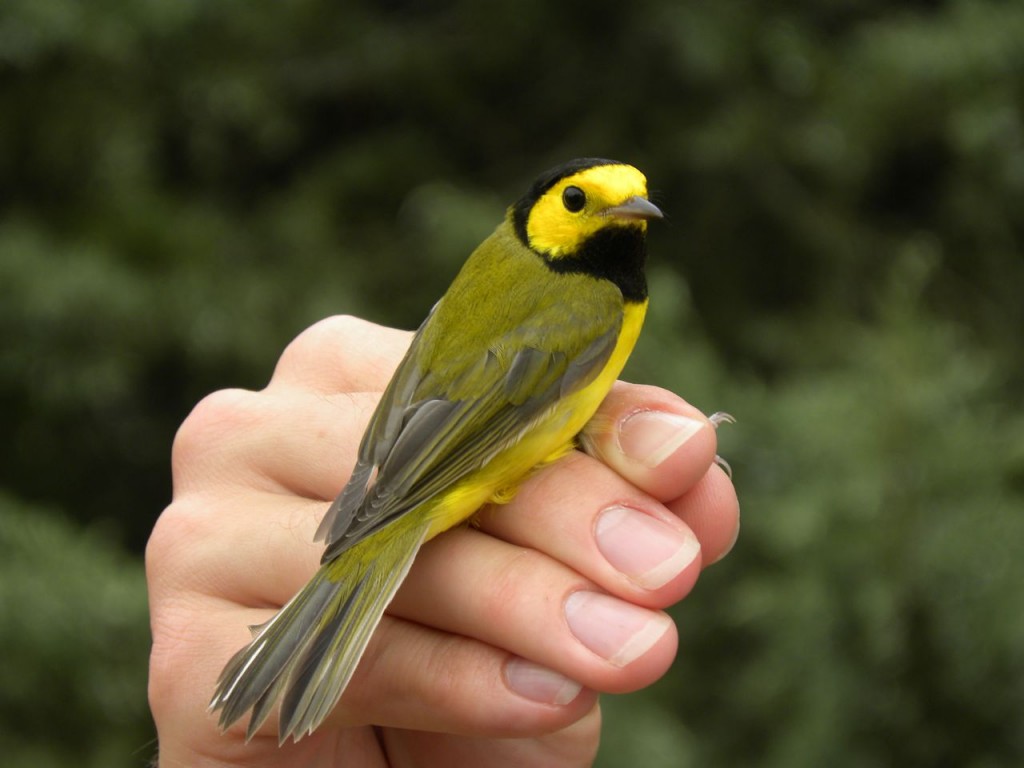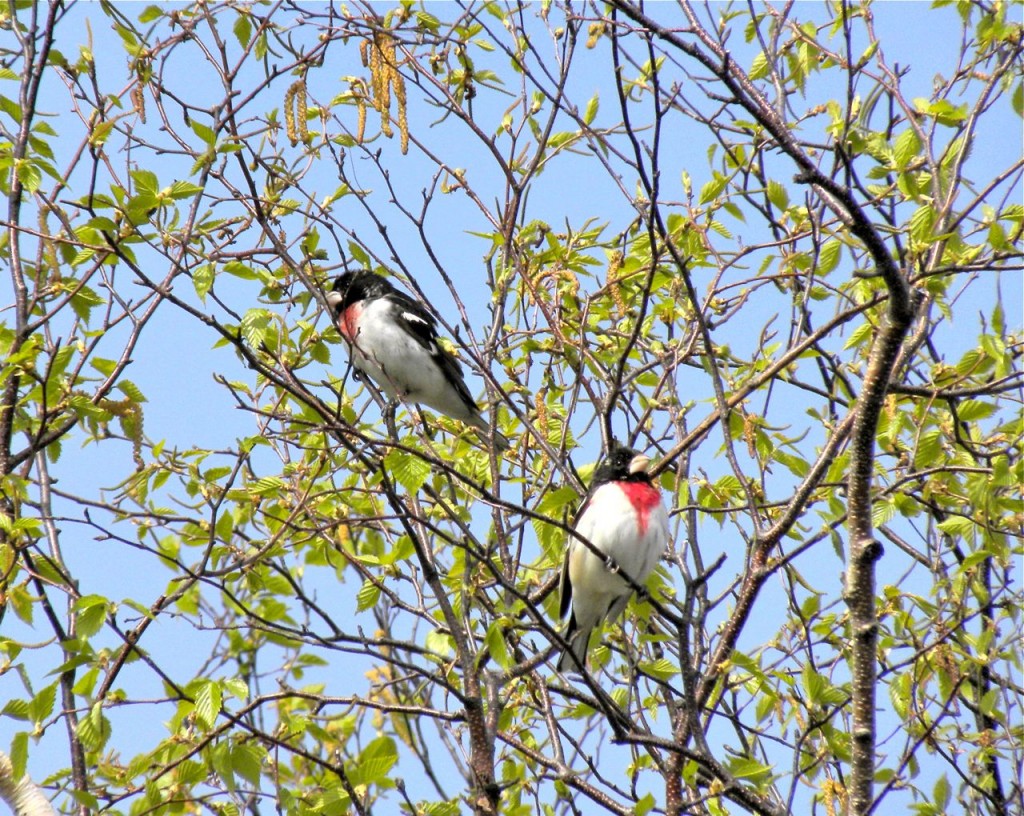18 June 2013. Norfolk Co. ON. Today was Hooded Warbler Day, they have eluded me for the past couple of years. I’ve heard them on a few occaisions and some good people have told me where I could see them and even pointed out where one was just a minute earlier. I’ve seen Hooded Warblers in mist nets and in the hands of a bird bander (those don’t count) and most frustratingly, as a flash of vanishing yellow in a tangle of exuberant shrubbery, but I’d never really clapped eyes on one to my full satisfaction. My growing awareness of this lapse was sooner or later bound to collide with the increasing population of Hooded Warblers in Ontario, and today it all came together.

A friend and I were visiting a favourite old-growth woodland in preparation for leading a Ferns and Birds field trip next weekend. Focusing mostly on ferns, we kept out heads down trying to unravel the many fern identification mysteries that entangle us (and that will surely make sharing our limited knowledge even harder). It’s not really relevant to a bird blog, but there are many subtle differences between members of the dryopteris family of ferns in Ontario, and the dryopteris are a notoriously libertine bunch producing many apparent hybrids with oddball characteristics; a bit like the royal families of Europe. Anyway as we peered at fern sori, pinnae and pinules we were moderately aware of bird song around us and every now and then one of us would mutter “Veery”, “Ovenbird” or “Rose-breasted Grosbeak”, they were the background sounds of the forest today.

But there was another song that wandered around us, “Weeet- a weeet- a weetoo”. After some head-scratching debate we thought we knew it: Hooded Warbler!, worth getting up off our knees for! And not to drag this drama on needlessly, I’ll just say that over the next hour or so we found a couple of brilliant, singing males as well as a female carrying food for her brood tucked somewhere in the undergrowth around us.
My day’s notes tell that we studied 14 species of fern and paid attention to 26 species of bird including three high-impact birds in quick succession: Scarlet Tanager, Black-throated Green Warbler and a nervous looking Veery . A Pileated Woodpecker swooped between old trees giving us only fleeting glimpses and we were surprised by a Chestnut-sided Warbler appearing from some roadside willows, but none of these could upstage the Hooded Warblers; it feels like we’ve finally been introduced.
Hello from Australia, and still very much enjoying your blog, Thankyou.
Whilst visiting the Leslie st spit I did manage to catch sight of a lone scarlet tanager feeding high at the top of a tree in between calling and looking about….. Black throat blue, and a rose grosbeak. On my last day I photographed a beaut little ovenbird. Which I named after returning home to my book. Loved my migration visit. The hooded warbler is simply stunning, I’m so glad you finally saw it in the wild so to speak. Cheers Sigrid.